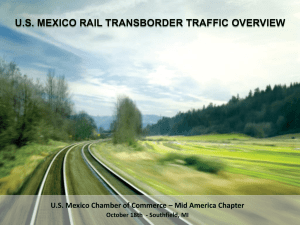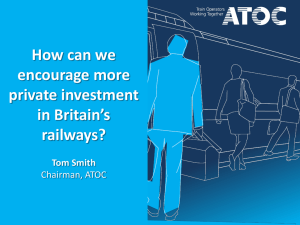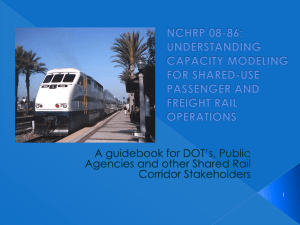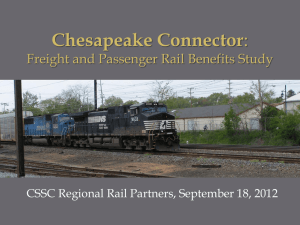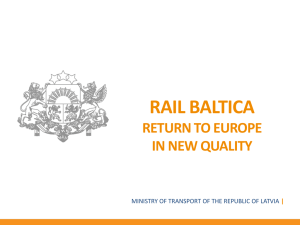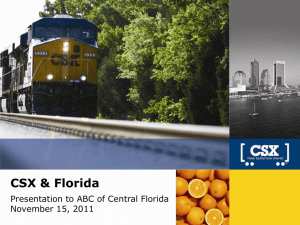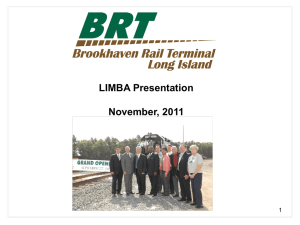Trucking and Rail-freight
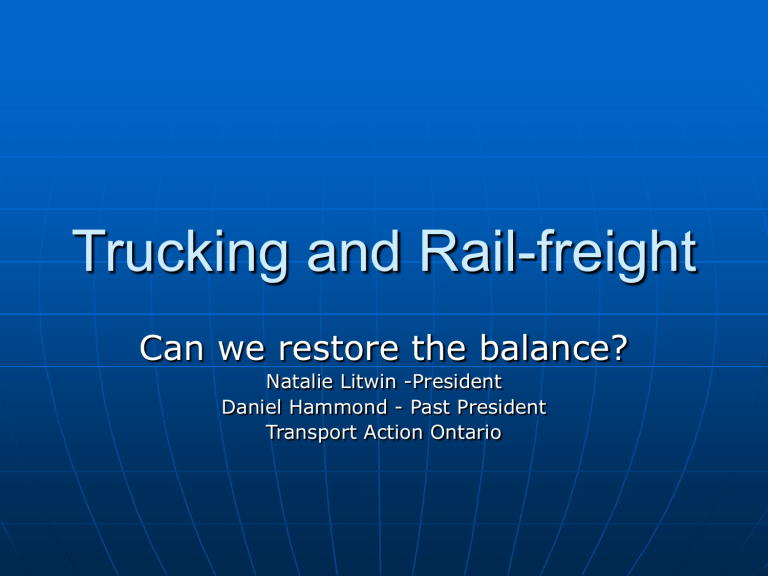
Trucking and Rail-freight
Can we restore the balance?
Natalie Litwin -President
Daniel Hammond - Past President
Transport Action Ontario
Can we restore the balance?
If rail transport is so efficient and great for the environment, why did trucks come to dominant freight transport?
Can we have an environmentally sustainable freight transport system without bankrupting us?
Can this be done while stimulating economic growth?
How we got here
Railways once the dominant mode of inland freight transport
Mechanized rail superior to animal drawn road transport for all but the shortest distances
Most businesses that used freight services once located near rail lines or spurs to avoid use of real horsepower cartage
How we got here
Mechanization of road transport in the 20 th
Century created development away from rail lines and terminals
Rail remained as the dominant carrier of freight
Manufacturers, warehouses remained next to the rail lines
How we got here
Just-in-time delivery of freight is not new
In 1946, the New York Central Railway introduced Pacemaker service
Overnight delivery thru-out most of New York state (with steam powered trains!)
Myth debunked that rail cannot provide “just-in-time” service
How we got here
By 1950, Pacemaker service was extended to
St. Louis, Chicago, Detroit, Toronto, Montreal,
Cleveland, Toledo
With delivery times as good as the best ever offered by the trucking industry
All on infrastructure that was built and maintained with private capital
How we got here
In 1956, US
President Dwight D.
Eisenhower signed the Federal-Aid
Highway Act into law
Railways now have to compete for capital and traffic with the largest public works program in history
How we got here
In retrospect, did the railways protect the interests of their shareholders during the debate of the
Federal-Aid Highway
Act ?
Would today’s AT&T,
Rogers, Verizon and Bell
Canada stand by while a public financed cell phone or fibre optic network was constructed?
We are Here
Public financed infrastructure
Advances in automotive technology
Government policies favouring highway transport (including permitting ever larger vehicles) and requiring railways to maintain an extensive network despite declining traffic
Caused a massive shift of freight traffic from rail to road
The myth that the free market chose highway transport is now busted
We are Here
•Less traffic with a post-war sized network, along with less access to capital (competition with government and the road transport companies for capital)
Quality of this extensive rail network declined rapidly
Delivery times lengthened and railways lost very profitable time sensitive traffic to highways with the decline accelerating in this viscous circle
We are Here
Staggers Act of 1980 reduced the regulation of railway industry
•This regulatory freedom permitted reduction of rail network
•Financially stronger railways improved the network that remained
We are Here
Exportation of manufacturing
Growth of container shipping
Big box retail
Double-stack container trains
Caused an explosion in rail traffic
Shatters the myth that consumer goods are not handled by railways
We are Here
Few terminals equipped to handle double stack container trains equals truck hauls the same or longer as when goods where manufactured in USA and Canada
Where We Want to Be
Reduce fuel use (less CO2 and other emissions, less dependence on foreign petroleum)
Reduce costs
Reduce land use
Where We Want to Be
Rail uses 1/7 th the energy to move freight
Rail can be electrified (less, or no, foreign oil, use of wind or solar generated)
Rail is less effected by weather
Rail is much higher in labour and land use productivity
Secondary railways for local freight and public transit can be constructed for less than an arterial road
Technology exists for economic rail short-haul of freight and international intermodal containers
Where We Want to Be – A Plan to
Get There
Reduce public spending on highways
Spending reduced to a level that maintains existing infrastructure
Halt new projects and expansion
Avoid use of PPP (Public
Private Partnership) to creatively finance uneconomic/nonsustainable projects
Where We Want to Be – A Plan to
Get There
Tax and policy incentives for investments in local intermodal terminals, (reduce truck haul), electrification of rail, shortline (existing or new track)
Tax credits for shippers to increase use of rail freight
Diversion of highway funding towards HSR – High Speed
Rail

